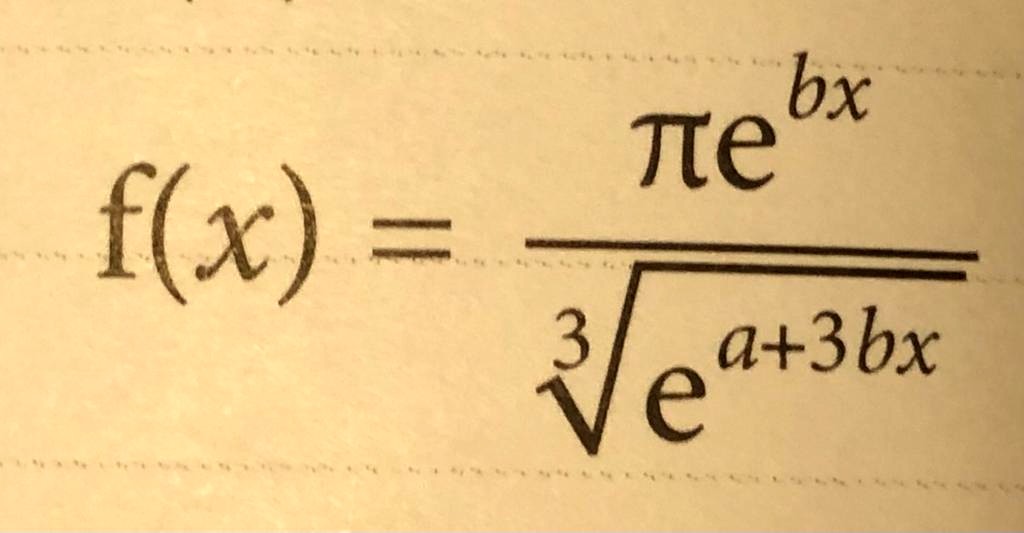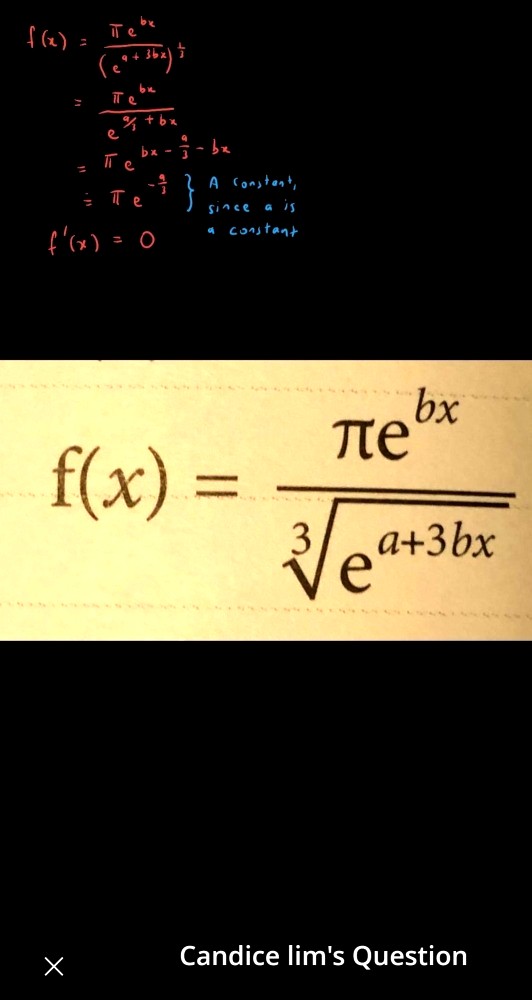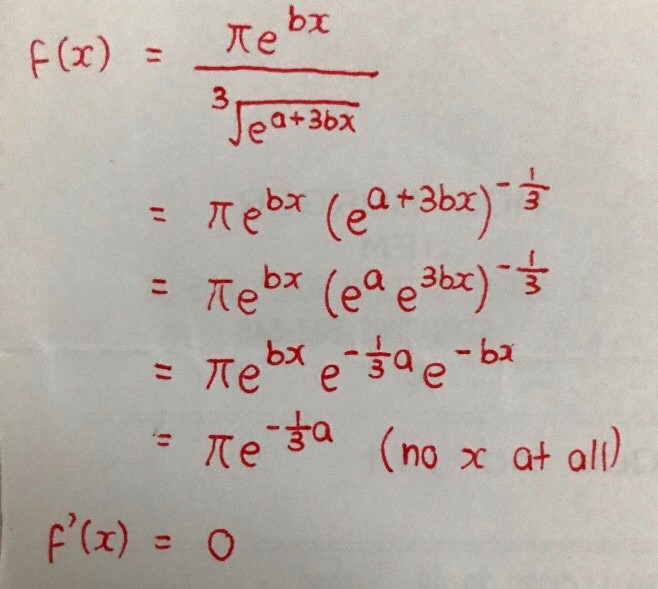Ask Singapore Homework?
Upload a photo of a Singapore homework and someone will email you the solution for free.

Question
secondary 4 | A Maths
2 Answers Below
Anyone can contribute an answer, even non-tutors.

Good evening Mr Eric, could you kindly advise on how to find f’(x) where a and b are constants? Many thanks!
in this case f(x) simplifies to pi * exp( (-1/3)a),
which is effectively a constant (there is no 'x' in the expression).
differential of a constant is 0
therefore f'(x) = 0
Thank you and have a good day.
See 2 Answers

I got the same answer but it wasn't the right answer (I am assuming that the model answer given is correct).
I tried eliminating the "b" in the denominator, but obtained another expression
f(x) = π times e^(-a/3) times e^[(b - 1) x]
which differentiates to the same expression as above, multiplied by a factor (b - 1).
In this case, the e^[(b - 1) x] remains present. Or put it simply, even the letter "x" should survive, but the model answer seems to miss out the letter "x".
Thank you for your feedback and have a good day ahead.
Thank you so much for your assurance coz I have worked on this question for many times and still got 0 as my final answer too which is very different from the model answer given to me.
Yes, I strongly believe that you are correct! Like what Mr Tan has mentioned, sometimes model answer can be incorrect. I just don't have the confident to challenge it :(
Once again thank you very much for coming back to me, and I really appreciate your advice and valuable feedback as always.
I hope you have a good day ahead :D






